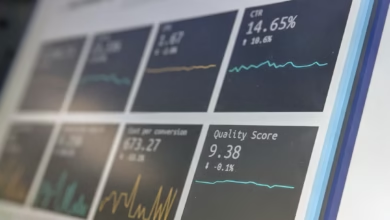Mastering Stock Trading: Essential Strategies, Styles, and Tools for Success in 2024

In today's fast-paced financial landscape, stock trading has emerged as a popular avenue for individuals seeking to grow their wealth and engage with the dynamic world of investments. Whether you're a seasoned investor or a newcomer to the stock market, understanding the fundamentals of trading is essential for success. This article delves into the intricacies of stock trading, covering key concepts and strategies that form the backbone of market participation.
We'll explore various trading styles, from day trading to swing trading, each with its unique approach and risk profile. Additionally, we will highlight the essential tools for success, including technical and fundamental analysis, which are critical for informed decision-making. With the rise of online trading platforms and innovative strategies such as algorithmic trading, social trading, and copy trading, the opportunities for both short-term and long-term investors have never been more accessible. Join us as we navigate the world of stock trading, equipping you with the knowledge to make informed choices and maximize your trading potential.
- 1. Understanding the Basics of Stock Trading: Key Concepts and Strategies
- 2. Exploring Different Trading Styles: From Day Trading to Swing Trading and Beyond
- 3. Essential Tools for Success: Technical and Fundamental Analysis in Stock Trading
1. Understanding the Basics of Stock Trading: Key Concepts and Strategies
Understanding the basics of stock trading is essential for anyone looking to navigate the complex world of financial markets. At its core, stock trading involves buying and selling shares of companies listed on stock exchanges. However, the landscape of trading extends far beyond just stocks, encompassing various strategies and instruments such as forex trading, options trading, and futures trading.
One of the primary concepts in stock trading is the distinction between day trading and swing trading. Day trading involves executing multiple trades within a single day, aiming to capitalize on small price movements. In contrast, swing trading focuses on holding positions for several days or weeks to profit from anticipated price shifts. Both methods require a solid understanding of market analysis techniques, including technical analysis and fundamental analysis.
Technical analysis utilizes chart patterns and indicators to predict future price movements, while fundamental analysis evaluates a company's financial health and market position. Traders can employ these analyses in various trading strategies, such as scalping, which seeks to make profits from minor price changes, or algorithmic trading, which uses automated systems to execute trades based on predetermined criteria.
Risk management is a critical aspect of stock trading that every trader must prioritize. It involves strategies to minimize losses and protect capital, such as using stop-loss orders and position sizing. Additionally, concepts like leverage trading and margin trading allow traders to amplify their positions but come with increased risk. Understanding how to manage these risks is vital, especially in volatile markets.
In the modern trading environment, online trading platforms have made it easier than ever to engage in trading activities. Traders can explore various asset classes, including commodities trading, index trading, and even crypto trading, which has surged in popularity. Furthermore, social trading and copy trading allow less experienced traders to mimic the trades of successful investors, providing an accessible entry point into the market.
For those interested in derivatives trading, options and CFDs (Contracts for Difference) offer unique opportunities to speculate on price movements without owning the underlying asset. Binary options can also provide straightforward trading opportunities but come with high risk. Arbitrage trading, on the other hand, exploits price discrepancies in different markets, providing potential profit opportunities.
Understanding trading psychology is crucial for success in stock trading. Emotions like fear and greed can significantly impact decision-making, leading to impulsive actions that can jeopardize trading success. Developing a disciplined approach and adhering to a well-defined trading plan can help mitigate the emotional rollercoaster often associated with trading.
In summary, mastering the basics of stock trading involves grasping key concepts and strategies, including various trading styles, risk management techniques, and market analysis methods. By equipping oneself with this knowledge, traders can navigate the stock market more effectively and increase their chances of success.
2. Exploring Different Trading Styles: From Day Trading to Swing Trading and Beyond
In the world of stock trading, understanding the various trading styles is essential for developing a strategy that aligns with your financial goals and risk tolerance. Each trading style has its unique characteristics, time commitment, and approach to market analysis. Here, we explore some of the most popular trading styles, including day trading, swing trading, and others.
Day trading involves buying and selling shares within the same trading day, often executing multiple trades to capitalize on short-term price fluctuations. This approach requires a strong grasp of technical analysis and trading psychology, as traders must make quick decisions based on real-time market data. Day traders typically utilize online trading platforms that offer advanced charting tools and real-time information to identify entry and exit points effectively.
Swing trading, on the other hand, focuses on capturing price moves over several days or weeks. Swing traders rely on both technical and fundamental analysis to identify potential trends and reversals. This style allows for a more flexible schedule compared to day trading, making it a popular choice for those who cannot dedicate entire days to trading.
Beyond these two styles, traders also explore options trading and futures trading, which involve derivatives trading strategies that can amplify potential gains but also come with increased risk. Each of these options allows traders to leverage their positions through margin trading, enhancing their potential returns while requiring robust risk management strategies.
Algorithmic trading and high-frequency trading are more advanced approaches that utilize computer algorithms to execute trades at high speeds. These styles require a deep understanding of market analysis and often involve trading strategies that capitalize on minute price discrepancies across different markets, such as arbitrage trading.
For those interested in a more social approach, copy trading and social trading allow novice traders to mimic the strategies of successful investors, thereby learning from their expertise. This style can be particularly beneficial for individuals new to stock trading or those looking to diversify their trading portfolio without extensive market knowledge.
Lastly, for traders interested in diversifying beyond traditional stock markets, options such as commodities trading, crypto trading, and index trading offer additional avenues to explore. Each of these markets presents unique opportunities and challenges, making it critical for traders to continuously refine their trading strategies and adapt to ever-changing market conditions.
In summary, exploring different trading styles—from day trading to swing trading and beyond—can help traders develop a comprehensive understanding of the stock market and enhance their overall trading experience. By leveraging various strategies and maintaining a focus on risk management, traders can navigate the complexities of the market more effectively.
3. Essential Tools for Success: Technical and Fundamental Analysis in Stock Trading
In the world of stock trading, success hinges on the ability to make informed decisions based on thorough market analysis. Two of the most essential tools for achieving this are technical analysis and fundamental analysis, which serve as the backbone of various trading strategies such as day trading, swing trading, and even more advanced methods like algorithmic trading and high-frequency trading.
Technical analysis involves examining historical price data and trading volume to identify patterns and trends. Traders utilize charts and indicators to forecast future price movements, making it an invaluable tool for short-term strategies like scalping and day trading. By understanding price action, traders can determine entry and exit points, manage risk effectively, and develop robust trading strategies tailored to their goals. Popular tools in technical analysis include moving averages, Bollinger Bands, and relative strength indicators, all of which can be easily accessed through online trading platforms.
On the other hand, fundamental analysis focuses on the intrinsic value of a stock by evaluating various economic, financial, and other qualitative and quantitative factors. This approach is essential for long-term investors and those engaging in options trading, futures trading, or commodities trading. By assessing a company's financial health, market position, and growth potential, traders can make informed decisions about which stocks to buy or sell. Key metrics such as earnings per share (EPS), price-to-earnings (P/E) ratio, and market capitalization are commonly analyzed in this process.
Combining both technical and fundamental analysis enhances trading psychology, enabling traders to take a balanced approach to market analysis. For instance, while technical analysis might suggest a potential buy signal, fundamental analysis can provide context to ensure that the stock aligns with broader market trends and economic conditions. This holistic approach not only aids in making informed trading decisions but also contributes to effective risk management and leverage trading strategies.
In summary, mastering both technical and fundamental analysis is crucial for anyone involved in stock trading, whether you're day trading, engaging in crypto trading, or exploring derivatives trading. By integrating these analytical techniques into your trading routine, you can enhance your ability to navigate the complexities of the stock market and achieve long-term success.
In conclusion, stock trading is a dynamic and multifaceted endeavor that offers various opportunities for investors to engage with the financial markets. By understanding the basics of stock trading, exploring different trading styles—such as day trading, swing trading, and even more advanced methods like options and futures trading—traders can tailor their approach to fit their individual goals and risk tolerance. Essential tools, including technical analysis and fundamental analysis, play a crucial role in making informed decisions, while effective risk management strategies can help safeguard investments against market volatility.
As you navigate the world of trading, whether it’s forex trading, crypto trading, or commodities trading, it’s vital to develop a solid trading psychology and to remain disciplined in your trading strategies. The rise of online trading platforms and innovative techniques like algorithmic trading and copy trading has made it easier than ever to access the markets, but success requires ongoing education and adaptability to changing conditions.
Ultimately, whether you’re engaging in high-frequency trading, scalping, or exploring derivatives trading through CFDs or ETFs, the key to success lies in a comprehensive understanding of market analysis and the ability to manage risks effectively. By continuously refining your approach and staying informed about the latest trends in trading, you can enhance your potential for success in the ever-evolving landscape of stock trading.
References:
(Include your sources here following APA format)





